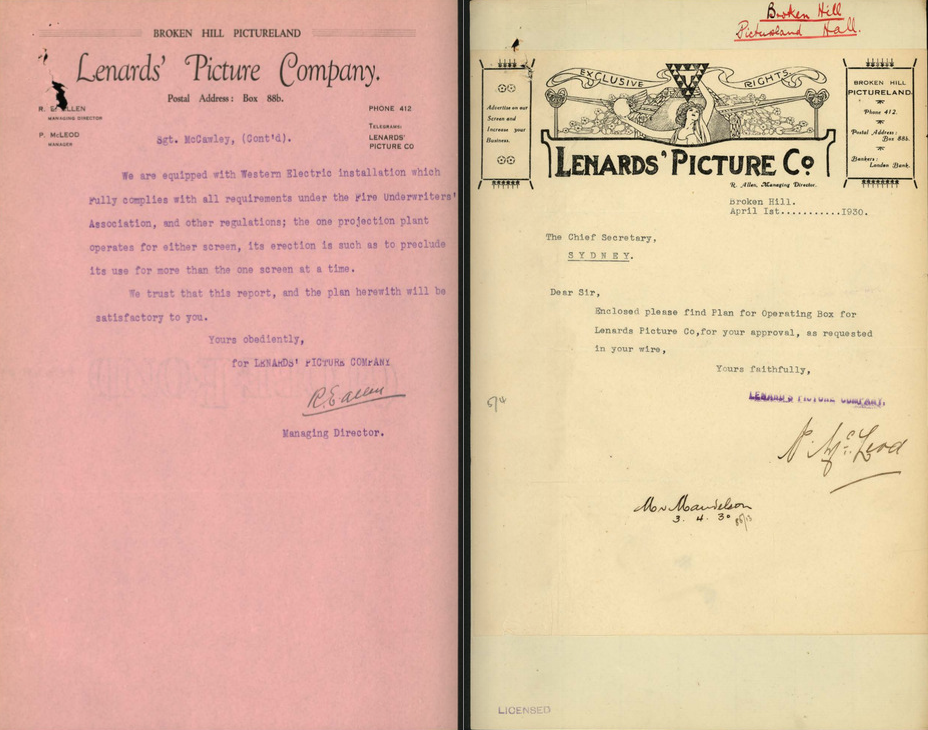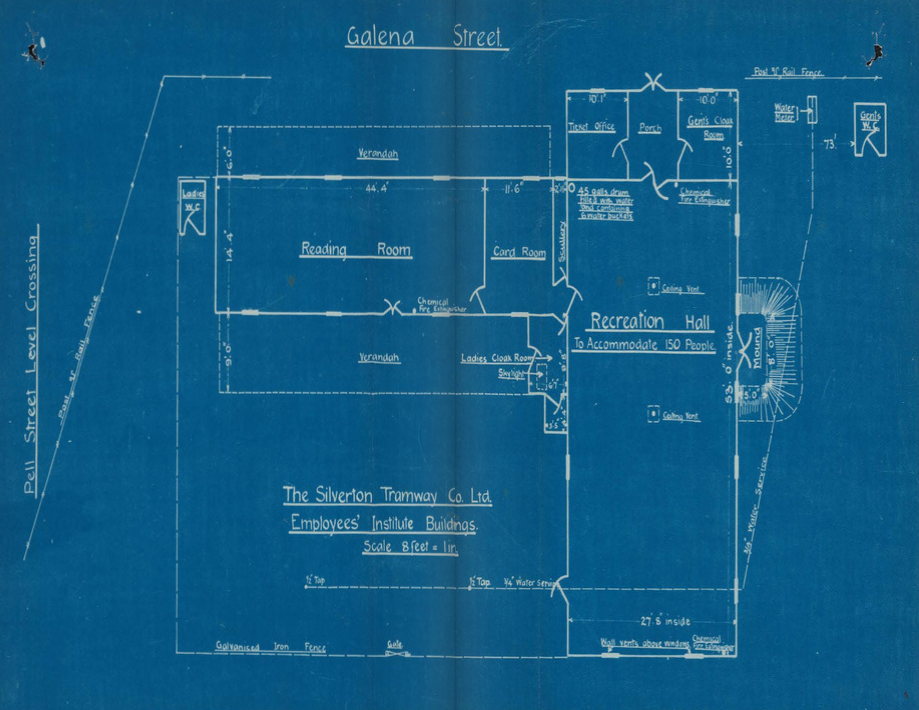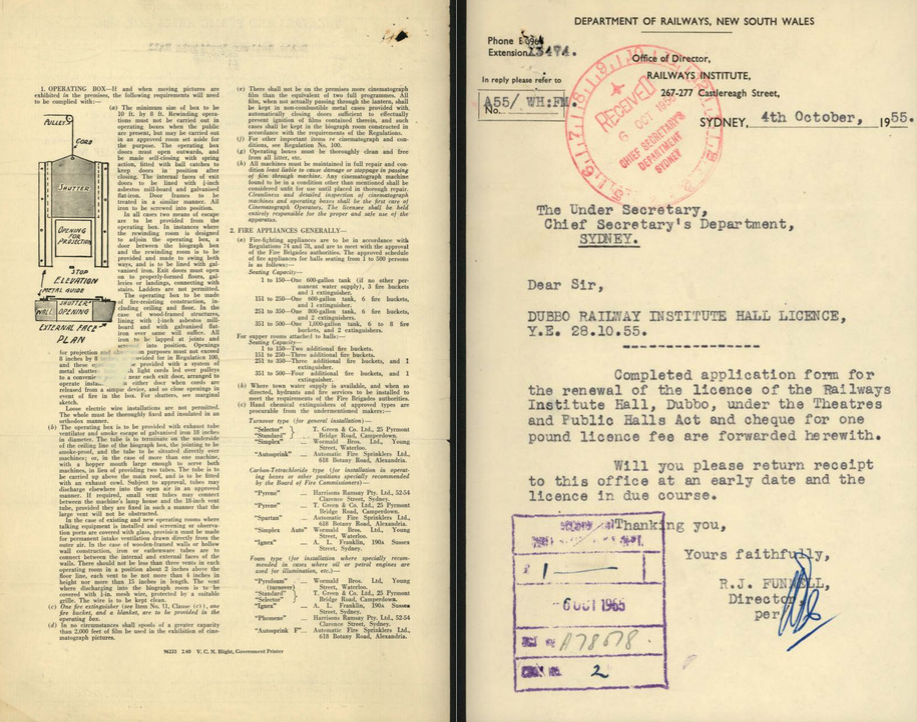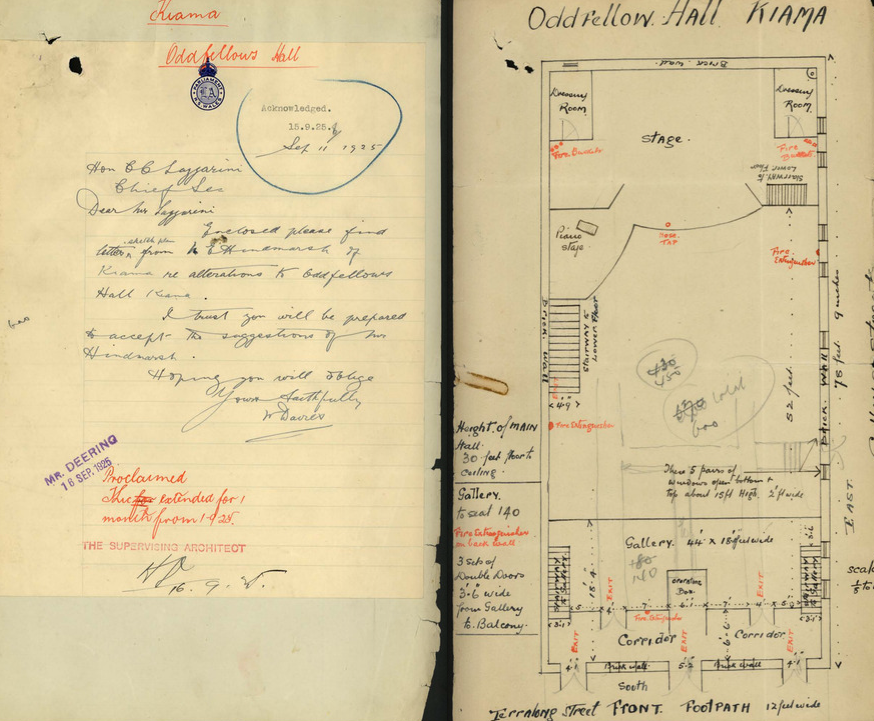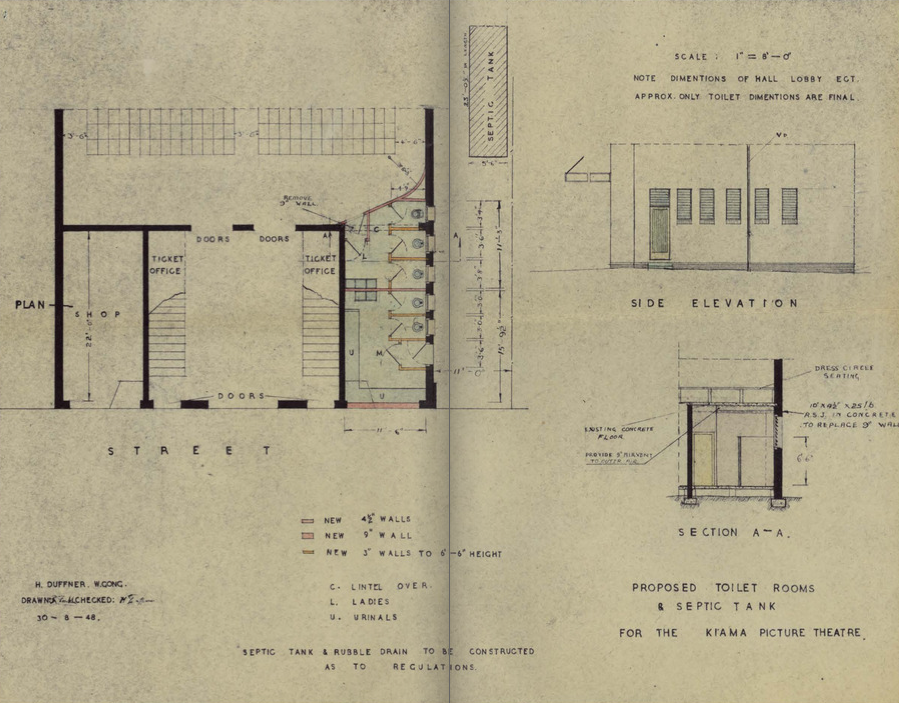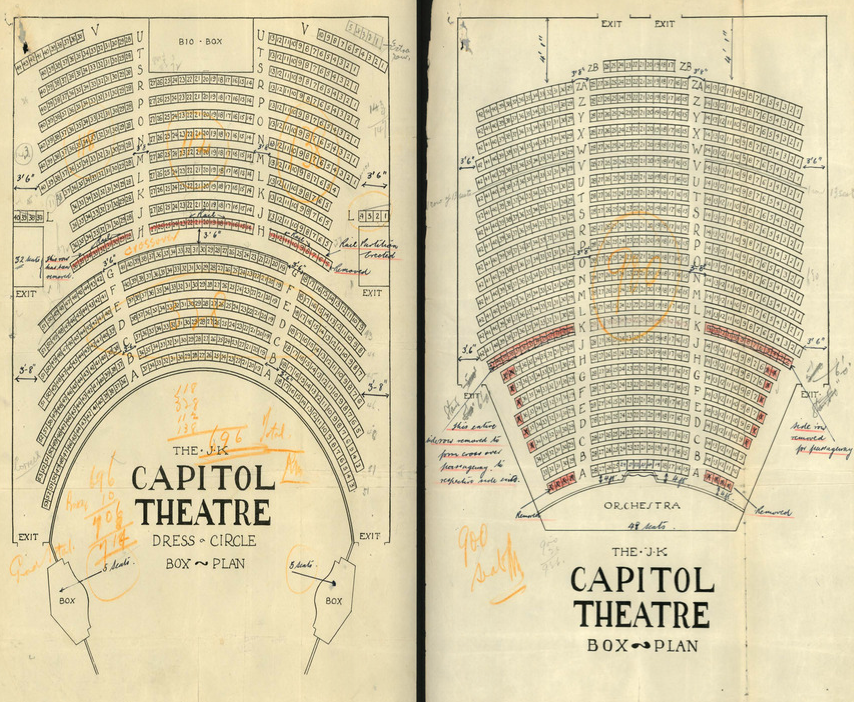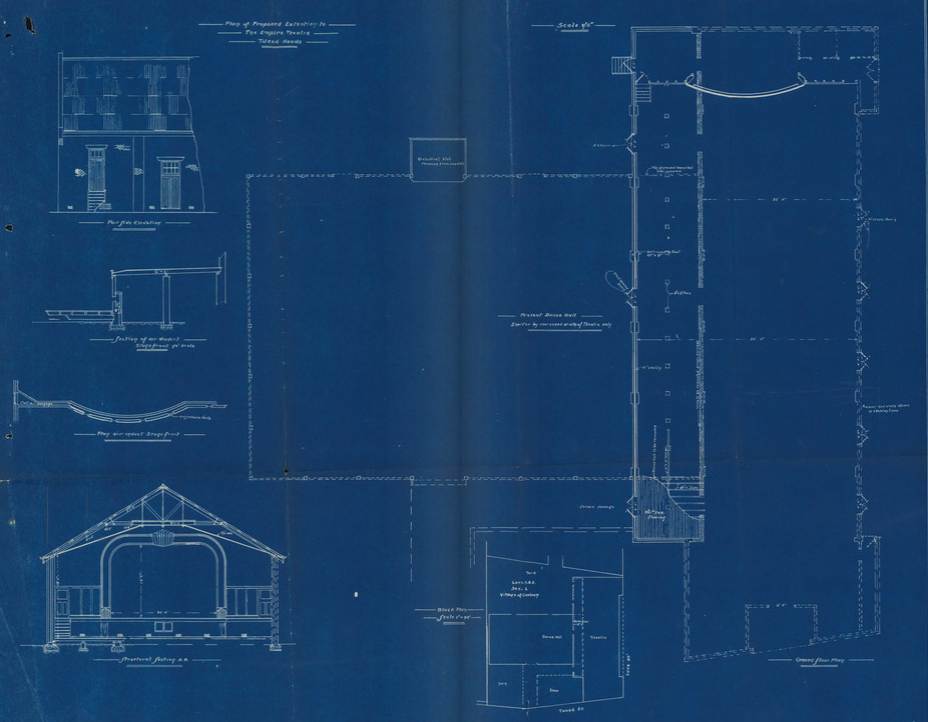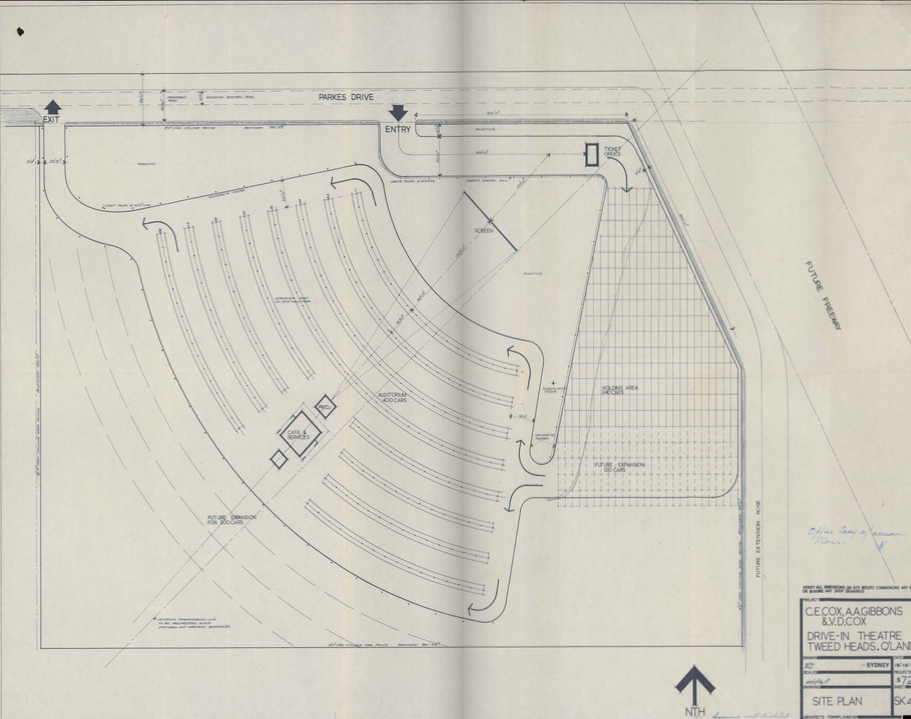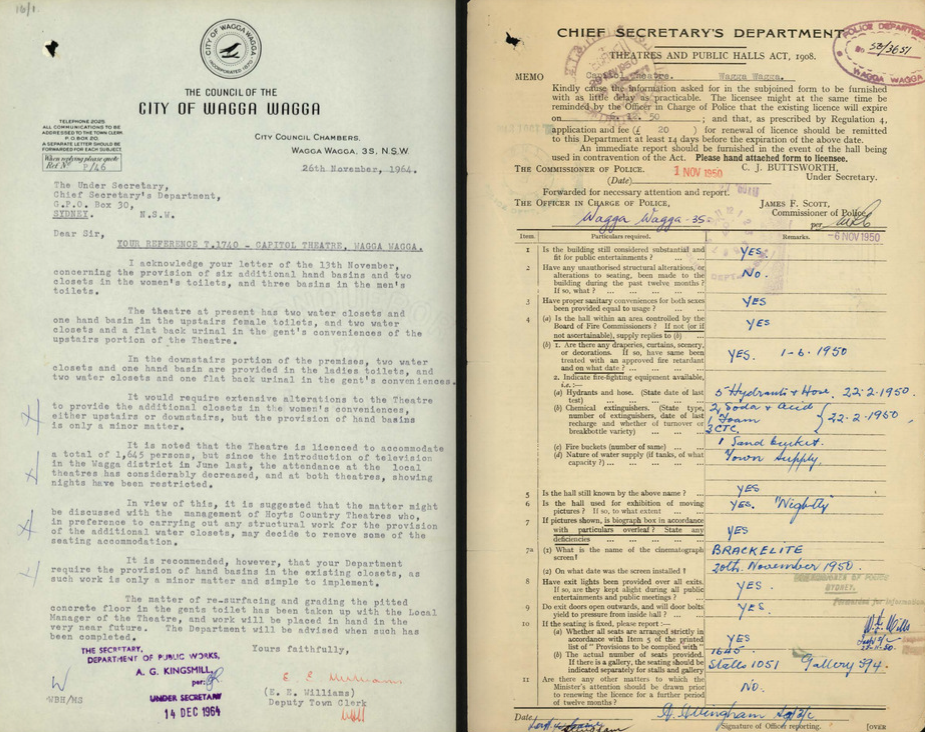Theatres & public halls: what the files can tell you
Theatres and public halls had to be licensed from 1895. The licensing and regulations related to public safety. The theatres and public halls were owned by private individuals, businesses, religious organisations, community groups and councils and they were used for many purposes – dances; social gatherings; showing movies; live entertainment and skating (roller and ice). The files provide information about local businesses – both in relation to theatres and public halls and the construction industry. Theatres and public halls are a large part of recreation in any town. The rise and fall of these buildings chart changes in population and in the broader world of recreation.
Digitised theatres / public halls files
The series NRS-15318 was created by the Chief Secretary's Department and then later by the Department of Local Government and cover the years 1895 to 1922. The files relate to the licensing of theatres and public halls all over New South Wales - there is a file for each one and they are listed by name in the State Archives catalogue. The files below were digitised as part of the Archives in Your Town program.
Broken Hill
The Ozone Theatre was in the block bounded by Chloride, Blende and Beryl Streets. Originally called Pictureland, it was considered a temporary structure before 1913. It had open air and enclosed areas. It became The Ozone Theatre in the mid 1930s. In 1959 movies were shown six nights a week. A fire on 24 December 1961 destroyed much of the building and it was demolished in 1963.
Burke Ward Institute Hall started as the Silverton Tramway Employees’ Club Recreation Hall on Galena Street in the late 1920s. The Silverton Tramway Employees’ Institute building also housed a card room and a meeting room. The hall was mainly used for dancing in the 1930s. The hall was managed by the Broken Hill City Council by 1970 and no longer required a licence.
Extracts from the files
Dubbo
The Railway Institute Hall in Talbragar Street was opened in 1929 with a “smoke social”. Serving as a hall for the Railway Institute it was also used for many community purposes. It was a large simple room and could seat 300 people. The hall was licenced until 1981.
Extracts from the files
Kiama
The Oddfellows Hall, on the corner of Terralong and Collins Streets, was licensed in 1895. Michael Nesbit Hindmarsh was the licence holder. In 1904 it was gaslight and had capacity for 800 people. Sketch plans from 1925 show a supper room, cloakrooms, a gallery, stage and dressing rooms back stage although it was being used to show pictures. There was a list of requirements that needed work. By the 1940s Wollongong Theatres was operating the Oddfellows Hall along with six other theatres and were removing the stage to allow more room for dancing. In 1955 changes and repairs were needed and in 1956 it was let to a local organisation and ceased to function as a public hall. In 1959 it became the Group Seven League’s Club.
The Antrim or Kiama Picture Theatre fronting Manning Street was built in 1923 and licensed in 1924. A J Beszant leased the theatre in 1928. It was licenced to seat 983 people. A Police report in 1938 said pictures were shown four times a week and dances were held approximately once a month. There were various owners and licensees over time including Wollongong Theatres. In 1945 the theatre was licensed to accommodate 975 people and new facilities were required. The consent of the Ministry of Post-War Reconstruction and the Directorate of War Organisation of Industry had to be obtained. The Kiama Chamber of Commerce complained in 1955 about a lack of matinees for children, poor reception in rainy weather and uncomfortable seating.
Extracts from the files
Tamworth
The Capital Theatre was built in 1927, on Brisbane Street, as a movie theatre and operated as one until 1966. It was authorised to seat 1,593 people. Hoyts bought this theatre and another eight theatres across regional NSW from Mr J K Kouvelis in 1946. In the 1970s it was used as a discotheque with amusement machines in the foyer. Later still the Salvation Army used the building to store second-hand clothes. Like many of these theatres it did not survive and was demolished in 1984.
Extracts from the files
Tweed Heads
The adjoining Empire Picture Theatre and Empire Jazz or Dance Pavilion in Tweed Heads both started in the late 1920s. Each had separate licences and at times different licensees. The licensees were inventive – enquiries were made about allowing people to skate in the Dance Pavilion free of charge on Sundays in the 1930s and to swap between restaurant and dance hall in the 1950s. Neither were approved. In 1959 movies were shown six nights a week but by 1961 the premises had not been used for nearly two years.
The Twin Towns Drive-In Theatre started development in 1969 with community concerns about traffic. The screen was installed in 1971 and movies were shown seven nights a week.
Extracts from the files
Wagga Wagga
The Masonic Hall on Tarcutta Street near Johnson Street was inspected in 1926. It had a capacity of 500 people and was used for general purposes, chiefly dancing, once a week. It was extended in the 1960s but ceased to be licenced in 1971.
The Capitol Theatre on Gurwood Street was licensed for the exhibition of cinematograph films in 1938. Films were shown every night with two or three matinees a week. By 1943 the theatre could seat 1,645 people. In 1947 the Capitol Theatre was among 10 theatres across regional NSW owned by Hoyts Country Theatres. In 1966 the site was purchased by Coles for a planned supermarket.
